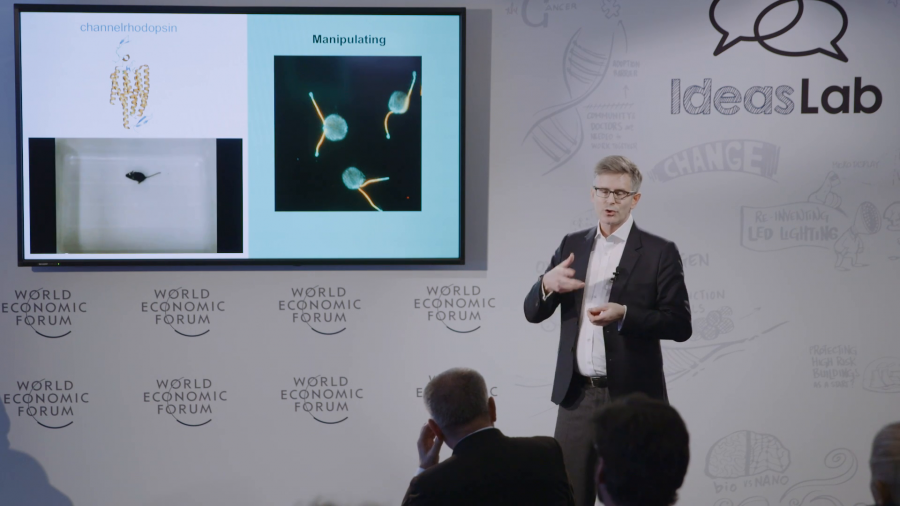Over the past century, we’ve been to the moon, we’ve split the atom, we’ve sequenced the human genome, but were still only at the very beginning of our understanding of the human brain. This is one of the great challenges that we face. If we can understand the brain, we can develop better treatments for brain disorders, we can design better robots, better computers, and ultimately we can better understand ourselves.
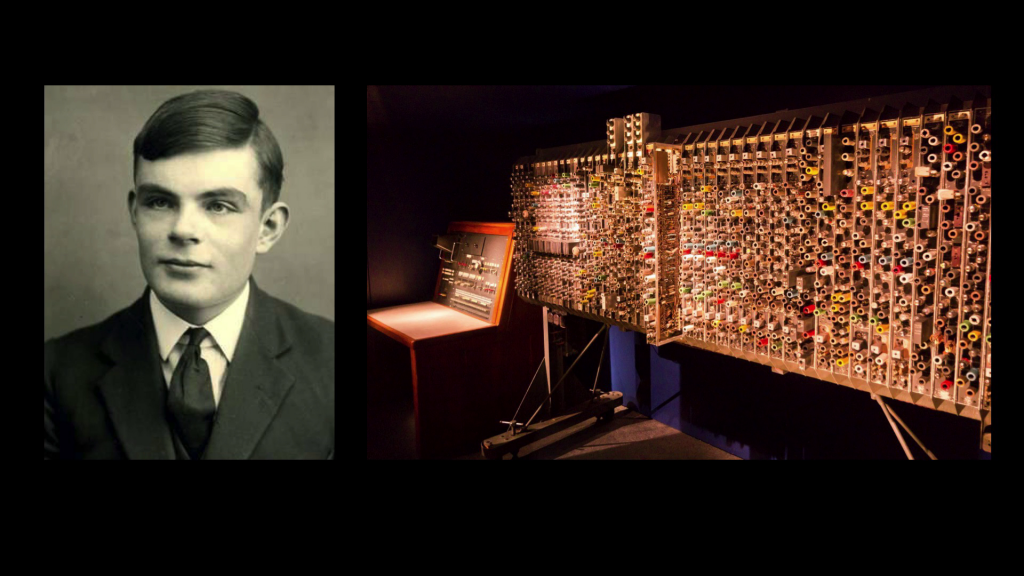
Alan Turing was one of the first to suggest that the brain computes. In other words, that it implements algorithms to solve problems, like computers. And Turing also was one of the first to design and help build a computer, the Automatic Computing Engine from 1950, and it was a process that he actually called building a brain. Since that time, there’s been tremendous advances in computing hardware, in algorithms. And there’s been a lot of recent excitement about deep learning networks, which are inspired by the hierarchical processing and the visual system of the brain, and which can be trained to recognize patterns like human faces, or cats in YouTube videos.
This combination of fast hardware and improved algorithms has now allowed computers to outperform brains on a range of different tasks, for example playing chess or playing video games, and computers cannot challenge the performance of humans for sophisticated tasks like object recognition, one of the holy grails of computer vision. However, brains are still better than computers at many tasks, particularly those that involve interacting with the real world.
Here we have Lionel Messi scoring a beautiful goal. [clip unavailable] And for comparison here we have the current state of the art of robot soccer.
https://www.youtube.com/watch?v=GuXLvrBrO3s
This is taken from the 2015 robot soccer World Cup. The key question now is, what is the origin of the superior performance of the human brain?
First of all, neurons are remarkable computing devices. Each neuron gets up to ten thousand synaptic inputs, each of which is plastic and allows neurons and brains to store huge amounts of information much more efficiently than computers can. Brains run on only about twelve watts of power, orders of magnitude more efficient than the computer.
But neurons cannot just store information, they also can process information. So in my lab we’re using lasers to activate individual synaptic inputs in patterns to single dendrites. And with these experiments we can show that single neurons can already solve computational tasks like pattern recognition.
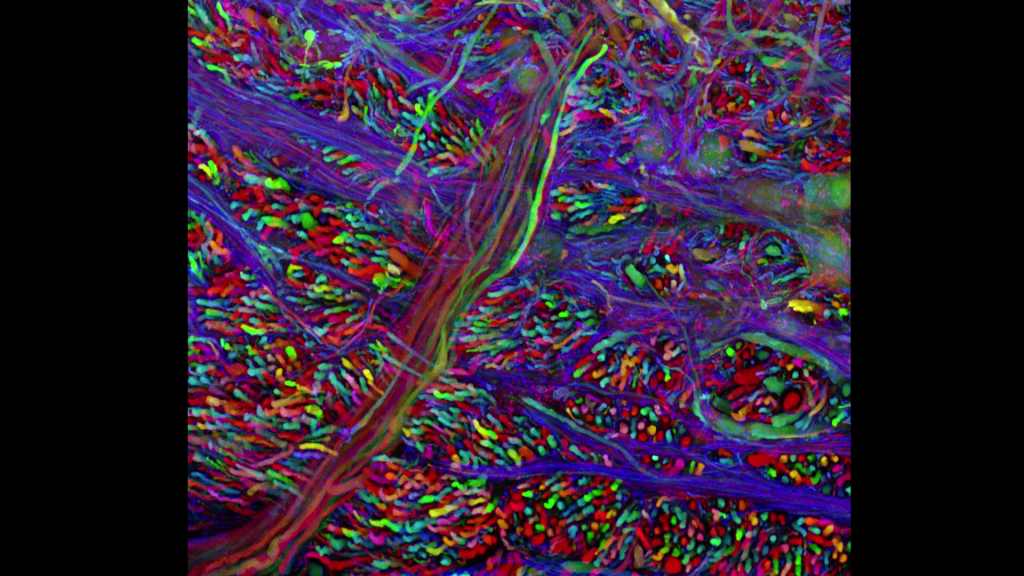
If neurons are so smart, why is it so hard to understand how the brain works? Well, there’s two main problems. The first is that neurons are embedded in neural circuits, which are very complicated. This is an image of a neural circuit taken from the so-called brainbow mouse developed by Jeff Lichtman and Josh Sanes at Harvard. And you can see from this image that reconstructing the wiring diagram of such a circuit, even when all the neurons are labeled with different colors, is a great challenge.

The second problem is that we don’t know the neural code. This is a simultaneous recording from hundreds of neurons in the cortex by my colleague Nick Steinmetz at UCL. And each neuron fires a spike or an action potential. So each dot here is a single action potential in a single neuron in this circuit. And just like it’s hard to read a message in Morse code if you don’t know the code, it’s very hard to figure out how neurons are processing information.
But we’re now at a pivotal point in neuroscience where we have new tools to crack this problem, coming from two unexpected sources in nature, the jellyfish, and green algae. And these two creatures have given us two new proteins that now allows us to read and write activity in neural circuits in the intact intact brain.
So, the jellyfish has given us green fluorescent protein, which we can link up with a calcium sensor to make a genetically-encoded calcium sensor. And here we’ve implemented this, we’ve expressed the sensor in cortical neurons in my lab. And you can see from this movie that you can use the flashes of light to record the activity of thousands of neurons in the intact brain.
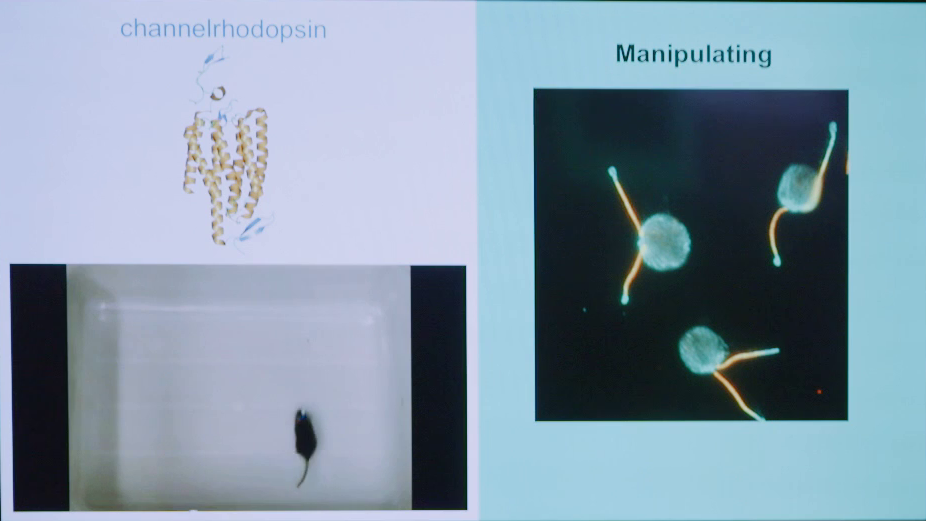
Green algae have given us a protein called channelrhodopsin, which is a light-sensitive channel which when expressed in neurons allows you to control the activity of neurons with light. And here my colleague Karl Deisseroth at Stanford has expressed channelrhodopsin in neurons of the motor cortex. And you can see that when you switch on the blue light, you can control the behavior of this mouse with light alone. This is called optogenetics.
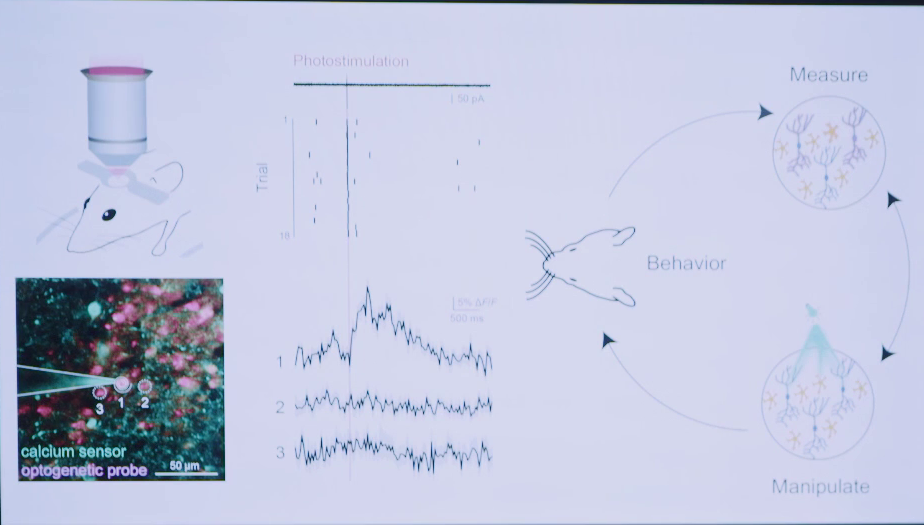
Now, wouldn’t it be great if we could combine these two revolutions by being able to read out and also manipulate the activity of neurons in the intact neural circuit and use individual beams of light to manipulate the neural code on the spatial and temporal scale in which it normally happens in the brain? So here’s how we’re approaching this dream experiment in my lab. We’re coexpressing a calcium sensor and an optogenetic probe derived from channelrhodopsin, in cortical neurons, and then using individual beams of laser light to manipulate individual neurons independent of their neighbors. We can then use this approach to measure the neural code during behavior, and also manipulate the neural code during behavior, to make causal links between patterns of activity and behavior.
So we’re at a new frontier in neuroscience where we can both read and write activity in neural circuits, and use this approach to crack the neural code and develop new treatments for disease. For example, restoring vision in the retina. And we can also harness this new information to develop better computer chips, and better robots. So it’s a time of tremendous opportunity. Thank you.
Further Reference
Michael Hausser’s faculty profile at UCL, and Neural Computation Lab
